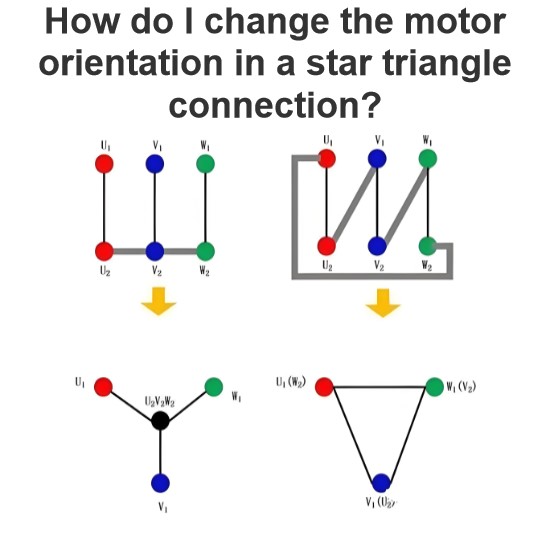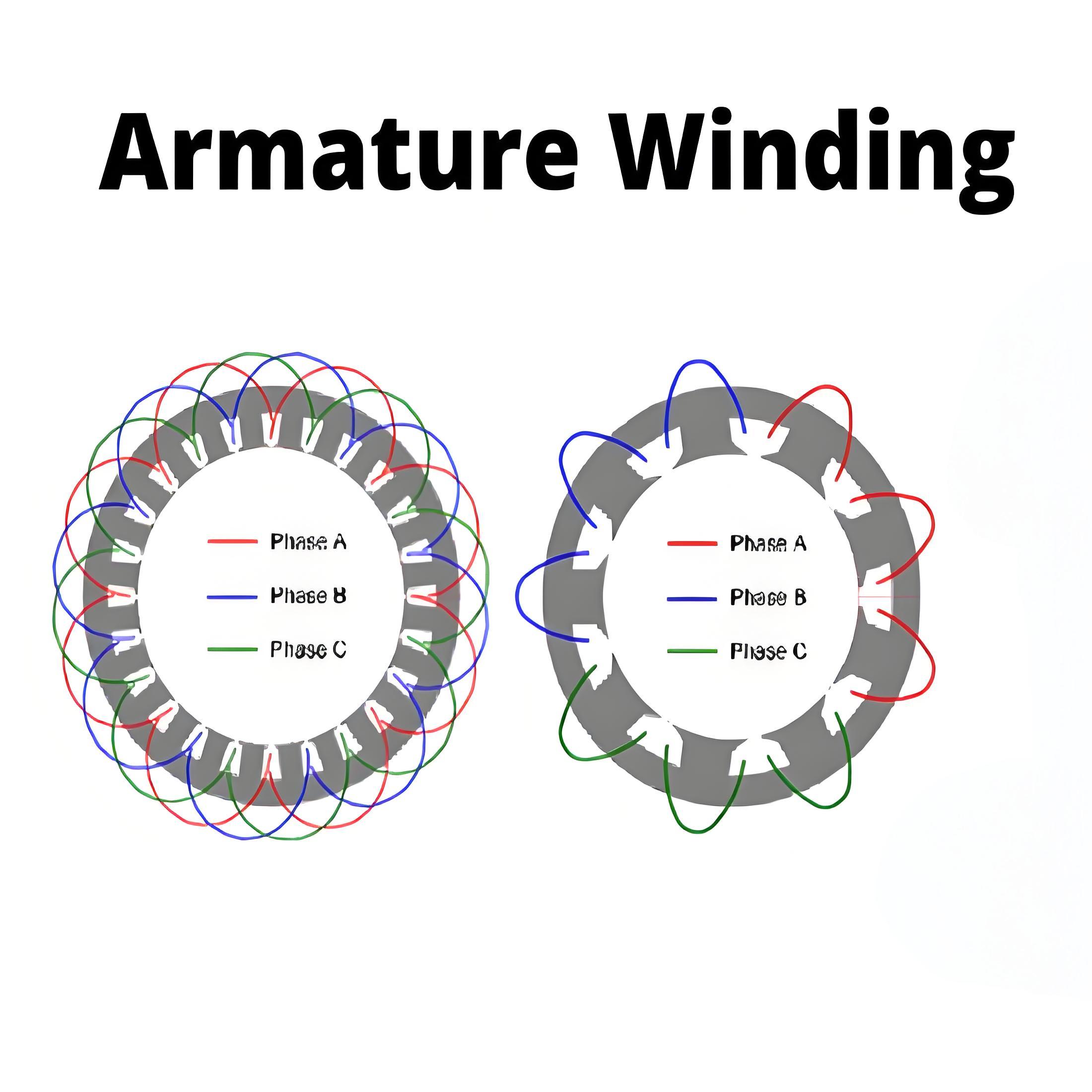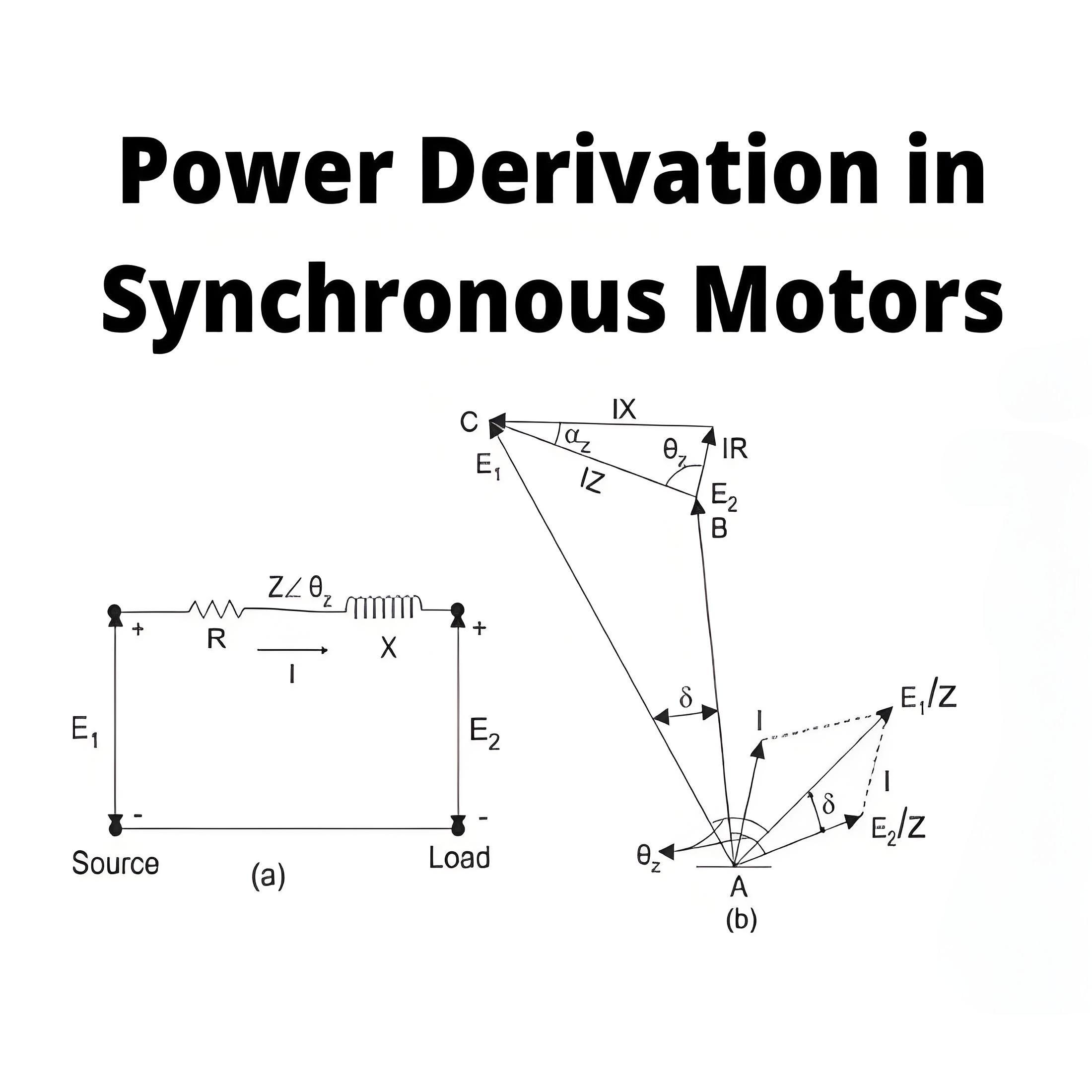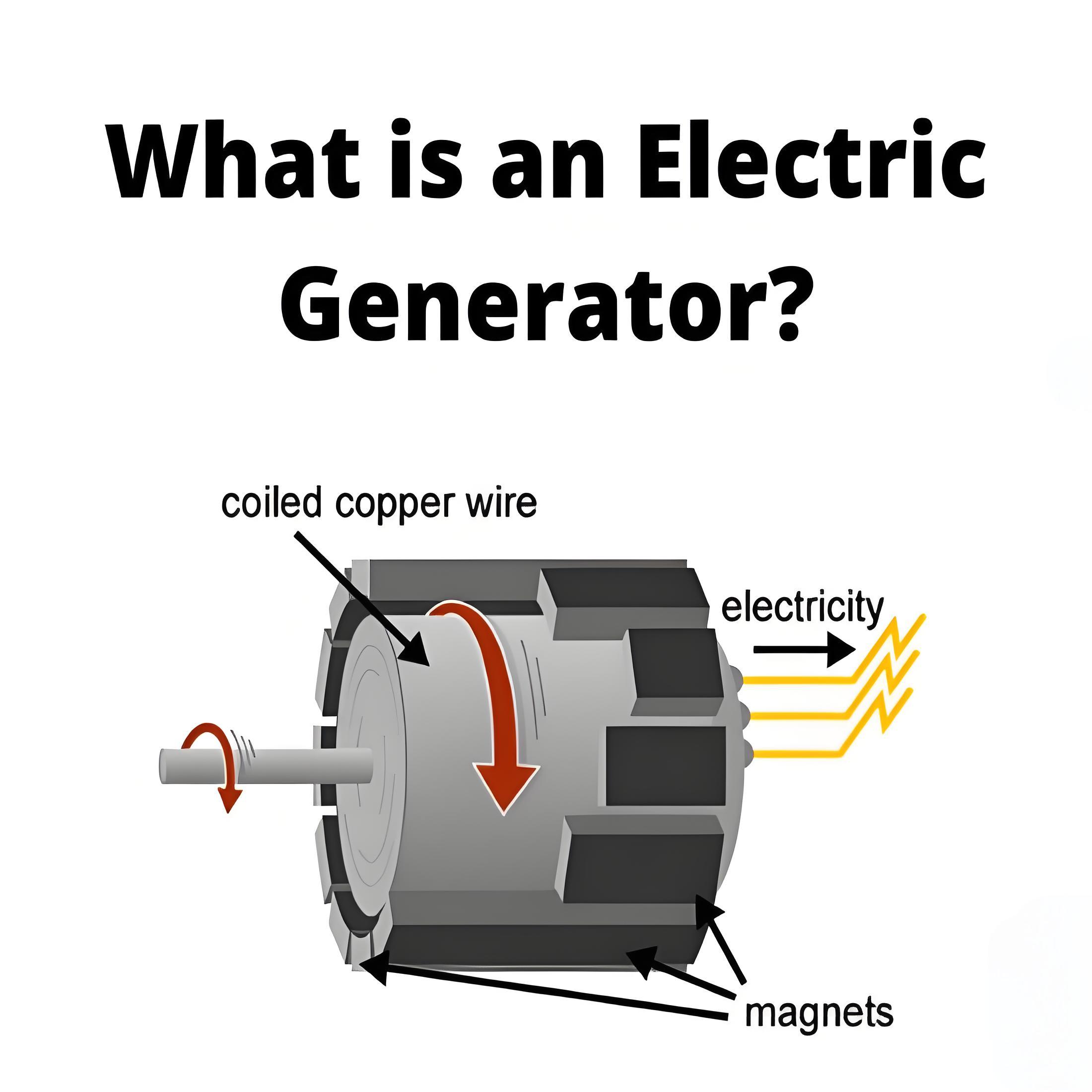What is a Rotating Magnetic Field?
What is a Rotating Magnetic Field?
Rotating field definition
When a three-phase power supply is applied to a three-phase distributed winding in a rotating machine, a rotating magnetic field is generated.
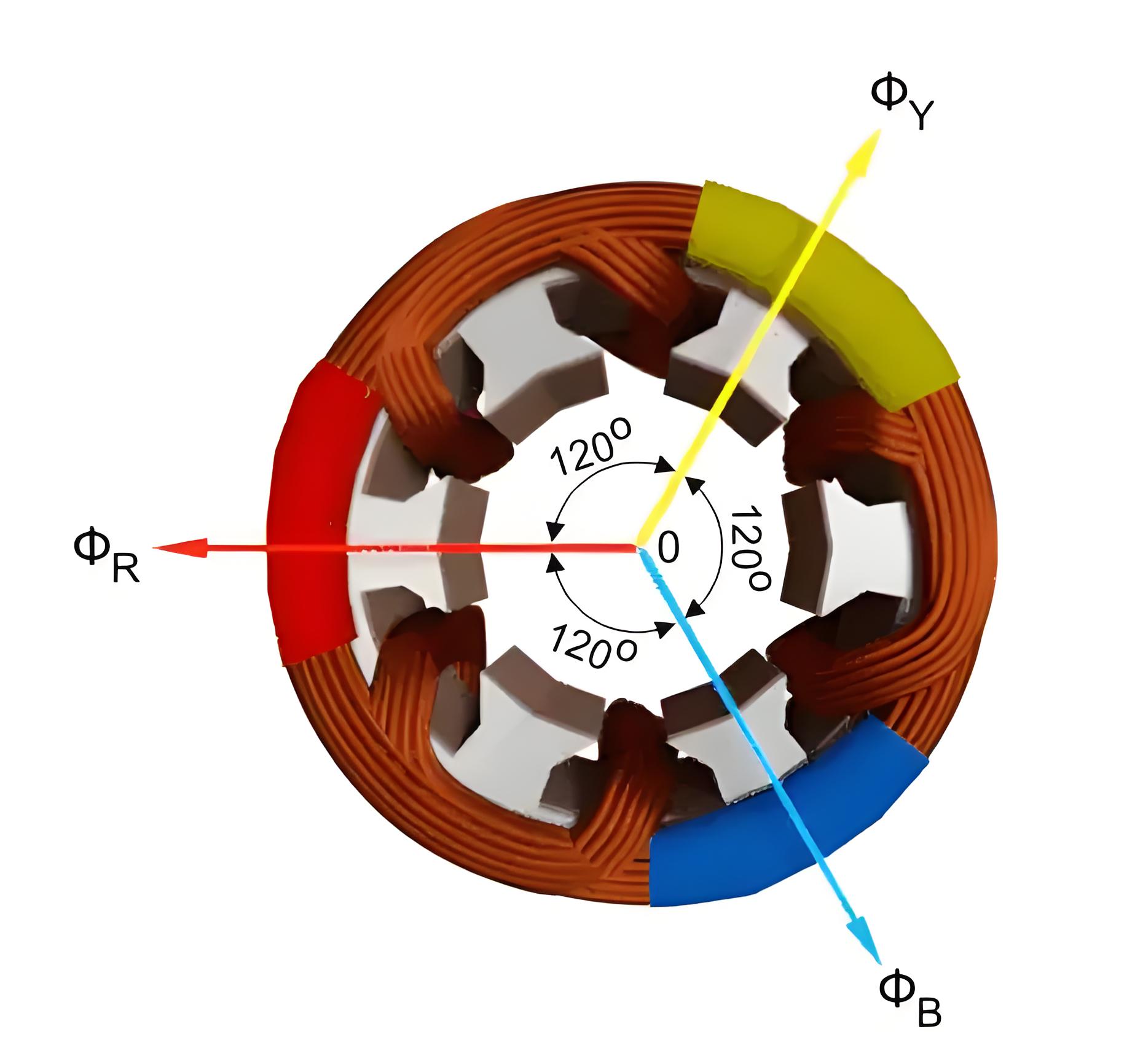
Although the vector sum of the three currents in a balanced three-phase system is zero at any moment, the resultant magnetic field produced by these currents is not zero. Instead, it has a constant non-zero value that rotates over time.
The magnetic flux produced by the current in each phase can be expressed by specific equations. These equations show that the magnetic flux is in phase with the current, similar to a three-phase current system.
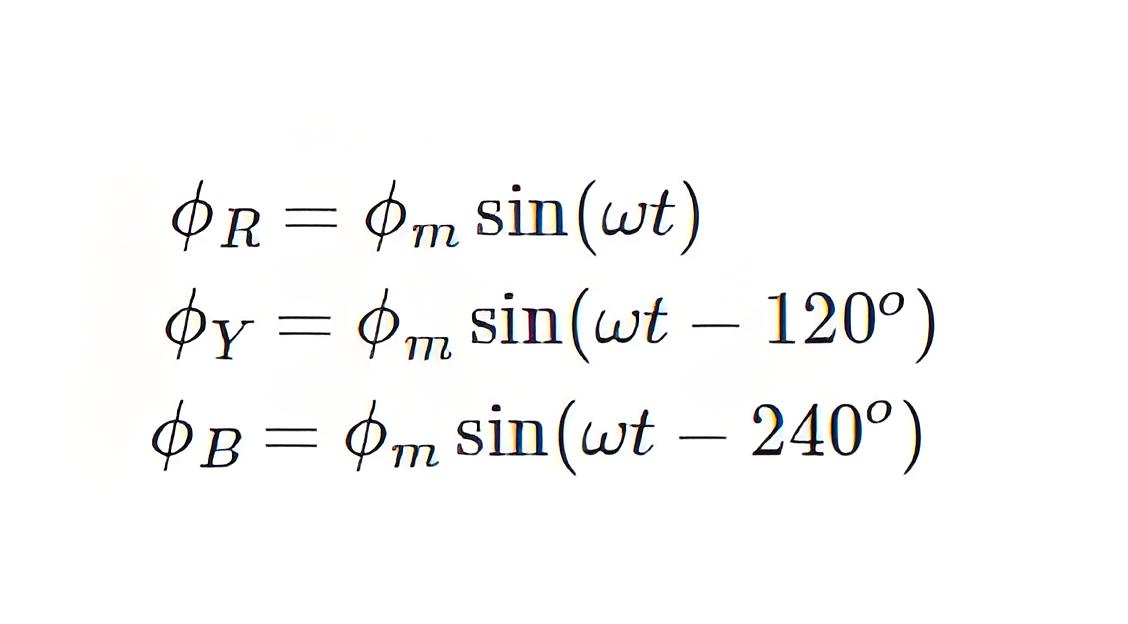
Where, φR, φY, and φB are the corresponding instantaneous magnetic fluxes of red, yellow, and blue phase windings, and the amplitudes of φm flux waves. Flux waves in space can be represented as shown in the figure below.
Now, in the graph representation of the flux wave above, we will first consider point 0.
In this case, the value of φ
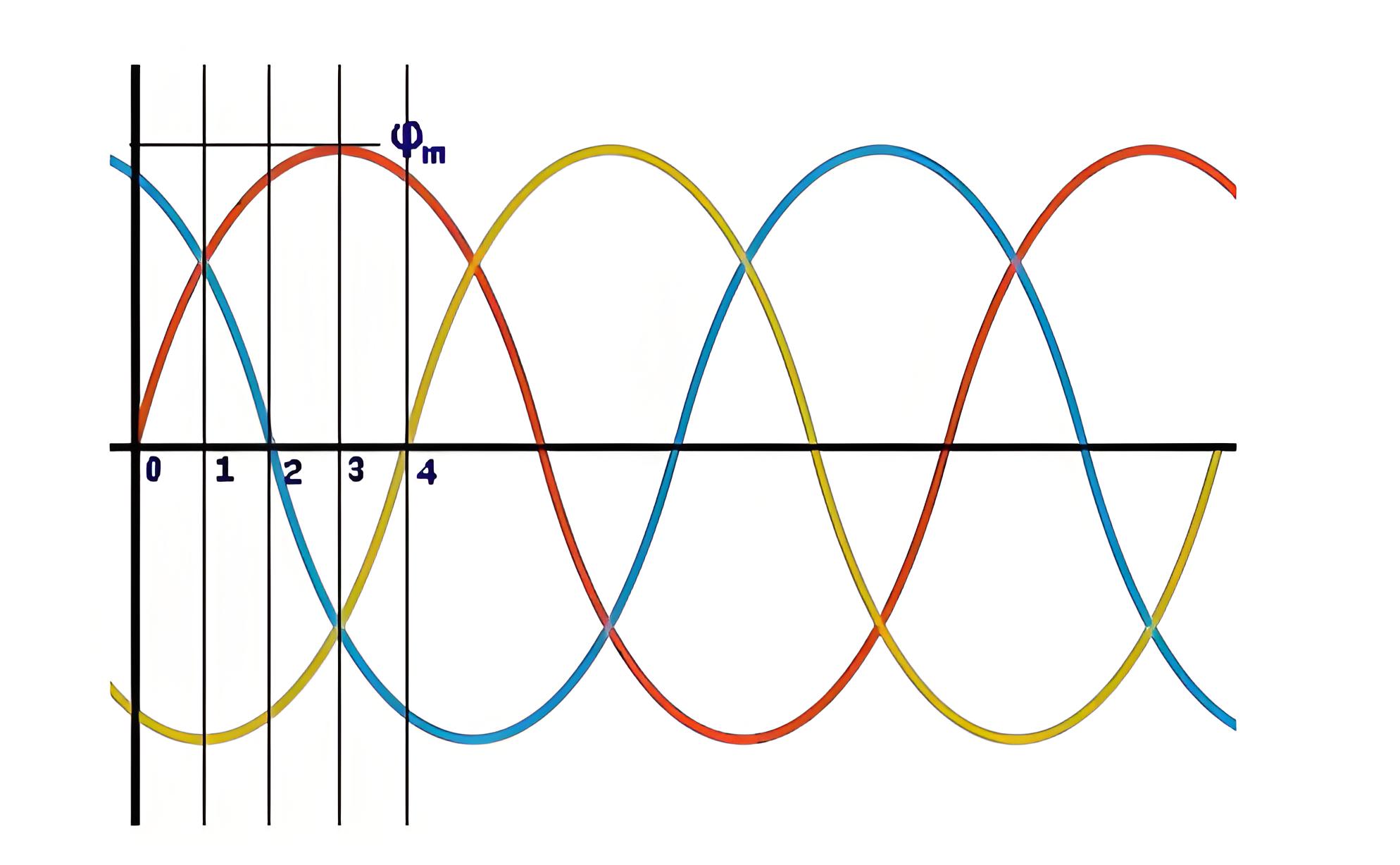
Three-phase power supply
The power supply involves three currents 120 degrees apart, thus forming a balanced system.
Magnetic flux behavior
The magnetic flux produced by each phase is in phase with the current and can be graphically represented.
Rotation of the flux vector
The resulting flux vector rotates at a constant value and completes a full cycle.
The generation of a rotating magnetic field
This rotating magnetic field is established due to a balanced power supply applied to the stator windings.
The Electricity Encyclopedia is dedicated to accelerating the dissemination and application of electricity knowledge and adding impetus to the development and innovation of the electricity industry.
